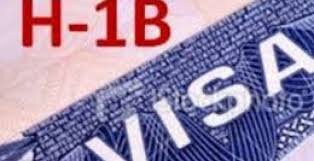H-1B Cap Exempt Overview - Healthcare Focus
H-1Bs come in many varieties, but generally fall within those that are “cap-subject” and “cap-exempt”. The purpose of this discussion is to provide a brief overview of how facilities can utilize the cap-exempt benefits of the H-1B category to implement more successful recruitment efforts. More on the traditional “cap-subject” in a later article.
H-1B Cap Exempt Explained
First of all, let’s be clear that when we refer to anything in regards to the “cap”, we are making reference to the federal law that “caps” the total number of new H-1B petitions to 65,000 per fiscal year. In addition to this, there is an additional “Master’s cap” of 20,000 per fiscal year. So, nationwide, there are currently only 85,000 slots available for new H-1B petitions. Because recent years have been oversubscribed, the applications made under the cap-subject rules are initially determined by a random lottery system. Statistically, an application may have a 30-70% chance of success based on whether we can claim a master’s cap eligibility. On top of the numerical limitations, there is a timing issue that can also make recruiting new H-1Bs problematic. More on H-1B transfers later.
Due to the unpredictable nature of the H-1B process, and the need for employers, especially healthcare providers to continue to seek creative means for addressing difficult recruiting processes, many facilities are considering whether they are eligible to sponsor a cap-exempt petition.
This shift in recruitment mindset is beneficial because the H-1B cap exempt category does not have a set quota or annual limit like the other categories. Since it is unlimited in number and can be applied for at any point during the year it is highly sought after. However, there are certain criteria which must be met for an approval to be granted.
If you previously were under H-1B status and are outside the country you may be able to have an employer file a cap exemption for the rest of your allowed duration up to 3 years. In order to do so however you must show that you were on H-1B status in the country within the past 6 years but haven’t used up that entire time on H-1B status.
For example, Susan was employed on H-1B in the United States from January 2009 to December 2012. She would not be able to file a new cap-exempt petition because she hasn’t been in the country within the past six years. With that being said, she must file in the next regular lottery on April 1st.
Another way of going around the annual quote is through H-1B cap-exempt jobs. Normally, this entails having a cap-exempt employer file a petition on your behalf. There are specific types of organizations and employers who qualify for H-1B cap exempt petitions. According to USCIS regulations, these employers include:
Institutions of higher education or affiliated entities
Based on Section 101 (a) of the Higher Education Act, an institution of higher education must adhere to the following criteria in order to be exempt from the H-1B cap:
Grants admission to students who have earned a secondary education.
Licensed by the proper institution to provide education beyond secondary school.
Offers educational programs which award bachelor’s degrees or a minimum of 2-years of education towards a degree.
Non-profit organizations associated with a government entity or an institute higher education.
According to USCIS guidelines, it suffices for the non-profit organization to be connected to an institution of higher learning by means of shared ownership/control, as a branch, member or subsidiary.
To avoid any confusion, USCIS defines a nonprofit research organization as one “whose primary purpose is to directly contribute to the research or education mission of the institution of higher education.” Moreover, it defines a governmental organization as “a United States Government entity whose primary mission is the performance or promotion of basic research or applied research.”
In the past, only nonprofit entities that were associated with the federal government were considered cap-exempt. Now, due to the changes made through the Federal Register’s Final Rule, the nonprofit cap-exempt employer can be associated with a state or local government organization.
The Final Rule also broadened the definition of a nonprofit organization by replacing the phrase, “primary purpose”, to the more flexible phrase, “fundamental activity”. Making this change allows H-1B nonprofit entities to qualify even if their primary purpose is not to contribute to research, it only needs to be a fundamental activity.
Colleges and universities are the most common type of not for profit institutions and those affiliated with these entities are typically medical labs, research units, and hospitals.
A special rule within immigration law and H-1B cap exempt petitions involves those physicians who were in the US for medical school or residency/fellowship, successfully received a J-1 Waiver and are now in H-1B status. Here is a quick overview of how to consider employing those individuals
J-1 Waiver comes with a 3 year work contract as part of the waiver regulations.
At the end of the 3 year period, the physician may remain at the same employer (and the employer will extend the H-1B for another 3 years) or the physician could accept another job offer, anywhere in the country, and be able to transfer their H-1B position without needing to go through the lottery.
Keep in mind that the new employer, if they are sponsoring a physician who completed their J-1 waiver contract, can sponsor the H-1B transfer, even if the employer is not considered cap-exempt themselves. This is a special rule as a thank you to those physicians who have worked in medically under-served areas as part of their J-1 waiver contract obligation.
Still unsure if your desired position falls under the regulations? Consult an H-1B transfer attorney to find out.

